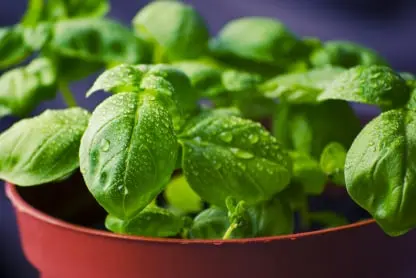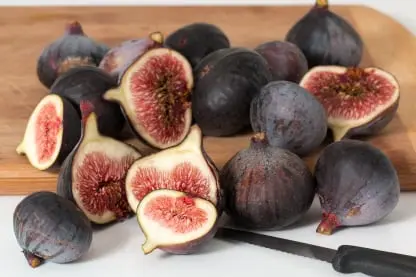Fresh cut Food Safety: with A.I. powered Food safety.
Fresh cut Food Safety app manages entire fresh cut business including incoming QC, post cut and pack Food Safety and pre-shipping Food Safetys. Slash Food Safety costs. Eliminate waste, price negotiations, and QC mistakes. Maximize quality consistency.

Fresh cut Food Safety during production
View app Specifications.
The quality of fresh-cut fruit and vegetable products includes a combination of attributes, such as appearance, texture, and flavor, as well as nutritional and safety aspects that determine their value to the consumer. Nutritionally, fruit and vegetables represent a good source of vitamins, minerals, and dietary fiber, and fresh-cut produce satisfies consumer demand for freshly prepared, convenient, healthy food. However, fresh-cut produce deteriorates faster than corresponding intact produce, as a result of damage caused by minimal processing, which accelerates many physiological changes that lead to a reduction in produce quality and shelf-life. The symptoms of produce deterioration include discoloration, increased oxidative browning at cut surfaces, flaccidity as a result of loss of water, and decreased nutritional value. Damaged plant tissues also represent a better substrate for growth of microorganisms, including spoilage microorganisms and foodborne pathogens. The risk of pathogen contamination and growth is one of the main safety concerns associated with fresh-cut produce, as highlighted by the increasing number of produce-linked foodborne outbreaks in recent years. The pathogens of major concern in fresh-cut produce are Listeria monocytogenes, pathogenic Escherichia coli mainly O157:H7, and Salmonella spp. This article describes the quality of fresh-cut produce, factors affecting quality, and various techniques for evaluating quality. In addition, the microbiological safety of fresh-cut produce and factors affecting pathogen survival and growth on fresh-cut produce are discussed in detail.

Daily Fresh cut packhouse hygiene checklist
Fruits and vegetables are regarded as an important part of the diet for humans. They supply a wide variety of nutrients and phytochemicals to the body. They are essential in protecting the body from various chronic diseases including some cancers and cardiovascular diseases. In modern times, the demand for healthy convenience foods has increased. The fresh-cut or minimally processed fruits and vegetables market is growing globally at a rapid pace. However, fresh-cut products are at more risk of contamination and degradation due to application of various preparation steps such as washing, peeling, cutting, and slicing. Further, some processing methods aimed to avoid contamination and to extend the shelf-life of such products may sometimes act adversely, causing risk to human health. For instance, use of chlorine as a disinfectant is not regarded as safe. Moreover, fresh-cut fruits and vegetables, being perishable foods and more susceptible to contamination, can facilitate the growth of both pathogenic and spoilage microorganisms. Therefore, there is need to apply effective measures to ensure quality and safety, and to consequently avoid any potential outbreak due to consumption of fresh-cut fruits and vegetables.

Fresh cut Food safety & management
This guidance is intended for those persons (“you”) who are subject to our regulation, in 21 CFR part 117 (part 117), entitled “Current Good Manufacturing Practice, Hazard Analysis, and Risk Based Preventive Controls for Human Food” and who https://www.cfs.gov.hk/english/whatsnew/whatsnew_fsf/Food_Safety_Tips_on_Fruits_and_Fruit_Products.html, process, pack, or hold fresh-cut produce. In this guidance, “fresh-cut produce” means any fresh fruit or vegetable or combination thereof that has been physically altered from its whole state after being harvested from the field (e.g., by chopping, dicing, peeling, ricing, shredding, slicing, spiralizing, or tearing) without additional processing (such as blanching or cooking). Fresh-cut produce may or may not undergo a wash or other treatment before being packaged for use by the consumer or a retail food establishment. Fresh-cut produce can be a single commodity or two or more mixed in the same package, such as coleslaw or fruit salads, and sometimes called “ready to use,” “pre-cut,” or “value added” produce. Fresh-cut produce also does not include produce that has been processed by freezing, cooking, canning, or packing in a juice, syrup, or dressing.

Fresh cut Supplier Food Safety & management
Cottage Food producers may be interested in using fresh or raw, cut fruit as a decorative topping on homemade baked goods. The Cottage Foods Exemption law permits individuals to make and sell only non-potentially hazardous foods. Fresh or raw, cut fruit is a potentially hazardous food because it requires refrigeration to prevent the growth of bacteria that may cause illness when eaten. A potentially hazardous food can support the rapid and progressive growth of infectious or toxigenic microorganisms.
Fresh or raw, cut fruit cannot be used in cottage foods as decoration. An alternative for Cottage Food producers is to use dried, dehydrated or freeze-dried fruits as decorative toppings as long as the final product's water activity (aw) is 0.85 or below.
Fresh whole or cut fruits are allowed as ingredients in baked goods, such as scones, because the cooking process provides enough heat to kill potentially illness-causing microorganisms that were present on the raw fruit.